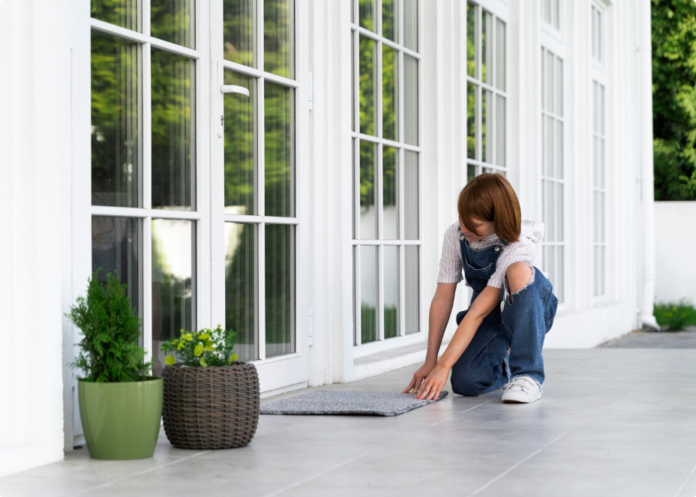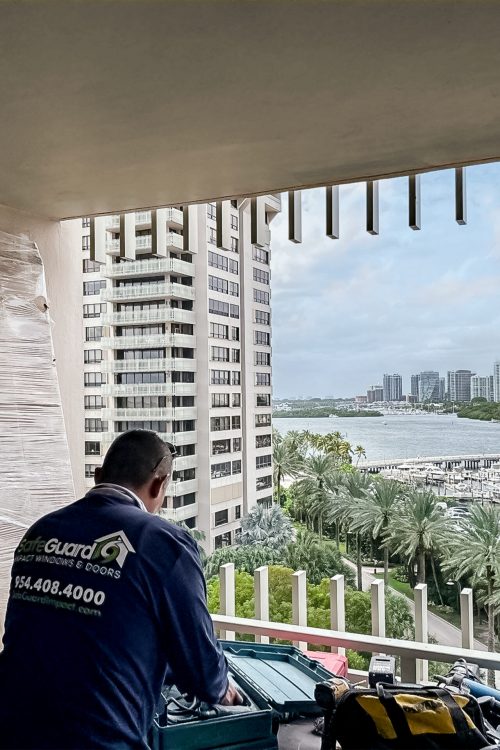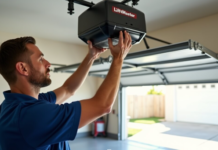Why Patio Surfaces Become Slippery
Most slips happen when water stays on a flat surface without any texture. Smooth concrete, porcelain tiles, or sealed natural stone often collect water. With no grip, feet lose balance. This becomes worse with bare feet or when the surface has algae, moss, or dust buildup.
Backyards with pools, sprinklers, or covered patios often face these issues more than open sunlit yards. Shade keeps the ground moist longer. Even a small spill turns risky on the wrong finish.
-
Choose Textured or Tumbled Pavers for Better Grip
Textured pavers give surface friction that helps feet stay firm. These pavers go through extra treatment that roughens the top. That helps water drain faster and stops feet from sliding.
Tumbled pavers are made to look weathered. Their soft corners and uneven texture give a natural stone look while keeping grip underfoot. These are perfect for classic patios or paths that lead to garden areas.
Best uses:
- Pool decks
- Dining areas near sprinklers
- Side paths with full shade
For a safe and long-lasting result, a trusted paver installation crew can help plan the layout with proper water slope and base compaction.
-
Use Matte Finish Instead of Glossy Surfaces
Glossy pavers often come with sealers or surface treatments that reflect light and shine. These look good but get very slippery when wet. On the other hand, matte pavers absorb light, do not reflect glare, and stay safe under rain or foot traffic.
Where to avoid glossy pavers:
- Entry points to the home
- Kids play zones
- Pool or spa edges
- Outdoor stairs
Matte finishes keep the outdoor area calm, elegant, and safe. Many new materials now offer matte finishes with stone or cement textures, blending both style and safety.
-
Pick Porous or Permeable Pavers to Manage Water Flow
Porous pavers allow water to pass through the surface and drain into the ground. This reduces puddles and keeps the area dry faster after rain or cleaning. These pavers are ideal for flat yards where water does not run off easily.
Permeable pavers often use wider joints filled with gravel or turf. This adds both function and design. The pattern stays strong, and moisture escapes below.
Common areas to use:
- Courtyard patios
- Driveways with pedestrian use
- Entry walkways near garden beds
Permeable designs also help meet water management rules in many parts of California. They reduce runoff and improve ground water recharge.
-
Use Non-Slip Coatings Only When Needed
Some outdoor pavers allow sealers or coatings that improve grip. These are useful for older patios that cannot be replaced or for areas with heavy foot use.
However, not all coatings work long term. Some wear off, leave residue, or change the color of the paver. If using a non-slip coating, pick one rated for outdoor use, UV protection, and wet zones.
Tips:
- Clean the surface fully before applying
- Avoid thick layers
- Reapply once or twice a year for best results
Sealers with texture or fine grit improve grip without changing how the patio looks from a distance.
-
Avoid Over-Sealing or Polished Stone in Outdoor Areas
Natural stone looks beautiful but often comes polished. Once sealed, the top becomes smooth and glossy. Rain, pool water, or even dew makes it slippery. Many patios use granite or marble slabs that become unsafe over time.
Instead, go for sandblasted, honed, or brushed finishes. These keep the stone’s natural look while giving foot grip. Brushed travertine or textured slate works better than smooth polished tiles.
Always ask for finish type before picking the stone. Some vendors only show dry samples, not wet behavior.
-
Keep the Slope and Drainage in Check
Even the best paver finish fails without proper drainage. If water sits on the surface, it creates moss, mold, and slip spots. A correct slope moves water away from seating or entry points.
Ideal slope:
- 1 inch drop every 4 to 5 feet
- Drain channels at the edge of patio
- Gravel base under turf or porous pavers
During paver installation, slope design and compaction affect how long the surface stays dry. A good team makes sure water flows right without causing washouts or sinking.
-
Clean the Surface Often to Remove Mold or Dust
Many slip accidents happen due to buildup, not just the material. Even a textured paver becomes slippery with dry leaves, dirt, or moss. Clean the patio once a month using a broom or water spray.
For shaded or moist areas, use a mild soap or vinegar mix to scrub the surface. Avoid bleach or heavy chemicals unless needed. Turf sections also need brushing to stay upright and dust-free.
If using artificial turf around the patio, a good turf installation team in Los Angeles will install with base layers that support drainage and airflow, reducing long-term mold problems.
Best Paver Finishes for Safety
Here is a list of finishes that reduce slip risks in patios: For homeowners seeking professional advice and installation, a trusted Patio Company Chester can help design safe, non-slip outdoor spaces tailored to local conditions.
| Finish Type | Surface Grip | Looks | Ideal Location |
| Textured Concrete | High | Simple, clean | Dining patios, pool decks |
| Tumbled Pavers | High | Rustic, natural | Garden paths, courtyards |
| Brushed Stone | Medium | Organic, soft | Outdoor kitchens, lounge zones |
| Matte Porcelain | Medium | Modern | Balcony patios, side entries |
| Permeable Pavers | High | Functional | Wet zones, flat yards |
Final Thought
Slippery patios cause more than small trouble. Even one fall can bring injury. But with the right paver finish, surface texture, and layout, the outdoor area becomes safer without losing style.
Textured surfaces, smart slope design, and a clean layout are the base of every safe patio. Avoid polished or glossy finishes. Use turf or porous joints to guide water away. Add shade only if drainage is planned well.
A clean patio invites people in. A safe patio lets people stay.




